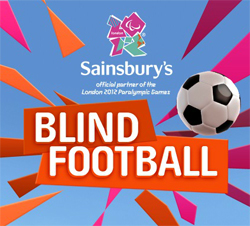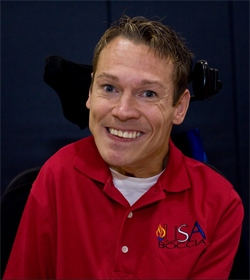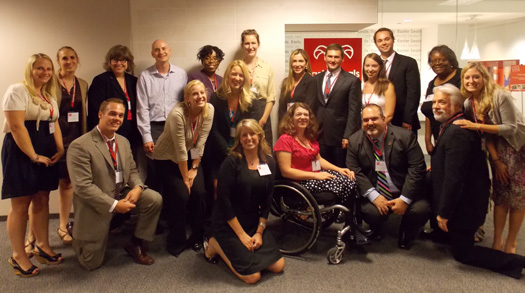by Allison Knopp
 I am so pleased to introduce Amy Liss as a guest blogger today. We’ve known Amy since she was a baby — she started with physical, occupational, and speech therapy here at Easter Seals Du Page and the Fox Valley Region when she was just 5 months old, and over the years we’ve helped her with assistive technology too. Amy is a lovely grown woman now, and she works here as a Development Assistant.
I am so pleased to introduce Amy Liss as a guest blogger today. We’ve known Amy since she was a baby — she started with physical, occupational, and speech therapy here at Easter Seals Du Page and the Fox Valley Region when she was just 5 months old, and over the years we’ve helped her with assistive technology too. Amy is a lovely grown woman now, and she works here as a Development Assistant.
Standing with my twin
by Amy Liss
Most people don’t realize how much work is involved in taking a step. The work involved in taking a step when you have spastic cerebral palsy? It’s exponential.
At Easter Seals, the therapists get it. My therapists have worked with me at Easter Seals DuPage and the Fox Valley Region for more than 25 years. This week we all experienced a new thrill: the therapists received some training using a new piece of equipment called a Walking Track from ArjoHuntleigh, and an hour later I was actually walking with it! You can see an amazing video of my first flight here.
I have had a walker for more than two years to use in therapy. When I take steps with that walker it happens after much stretching in therapy and I really have to think about the movements for each step I take. With the new walking track, my feet just seemed to go on their own. It felt like I was running at some points — but maybe that was just my excitement!
Thanks to Easter Seals, I have been able to use a lot of cool equipment to help make my body stronger but nothing like this. It’s so hard to describe the feeling, but the first time in it, the walking just seemed to come so easily. After posting the video on Facebook, I have read so many wonderful comments from people I don’t even know personally that are impressed by Easter Seals and are amazed to see me upright and moving. After 29 years of therapy, this is as close as I’ve ever come to feeling like I’m just walking like everyone else.
I’m excited to see other clients use this equipment, but I have to admit I’ll always be thrilled that I was the first one in it! My twin sister Kelly said it was the very first time we took a picture standing together and my little sister, Lindsay, said she cried watching the video and seeing me walk.
My therapists, Kathe and Diane, should be equally as excited because they are the ones who got me to this point. I loved watching their faces especially because they had just learned how to use the track an hour before I was on it. I was so impressed with their willingness to use a piece of equipment so readily after just being introduced to it.
The whole experience was really emotional for me because I really felt like I was walking down the hall with my friend, Kathe. And you know what? I was!
 Labor Day has come and gone, and with the kids back in school this might be the perfect time to recommend a free booklet (PDF) from the HSC Foundation that helps parents learn about resources available to them.
Labor Day has come and gone, and with the kids back in school this might be the perfect time to recommend a free booklet (PDF) from the HSC Foundation that helps parents learn about resources available to them.






 We just started an Animal Assisted Therapy program here at
We just started an Animal Assisted Therapy program here at  Lately, I’ve noticed a trend in people mixing it up a little when it comes to their birthdays. Instead of a candles and cake party, I’ve seen friends do a volunteer project together or even ask others to make a donation on behalf of their favorite charity.
Lately, I’ve noticed a trend in people mixing it up a little when it comes to their birthdays. Instead of a candles and cake party, I’ve seen friends do a volunteer project together or even ask others to make a donation on behalf of their favorite charity.
 Joey Travolta (yep, he’s John’s brother) was a special education teacher before his success in the film industry. He paired these two areas of expertise (special education and filmmaking) to start
Joey Travolta (yep, he’s John’s brother) was a special education teacher before his success in the film industry. He paired these two areas of expertise (special education and filmmaking) to start  Last week a friend sent me a
Last week a friend sent me a  Paralympian Austin Hanson, 38, has spent years and years in boccia ball training with his father here at
Paralympian Austin Hanson, 38, has spent years and years in boccia ball training with his father here at 